Iceland was surprisingly not on the top of my bucket list for a long time.
It was always one of those “hope to visit someday” places for me. It seemed too remote, too cold, and too inaccessible. Only when I started researching the country, did I realize it’s a very practical and reachable travel destination. I also learned that October is an especially good time to visit Iceland.
[You Might Like: 10 Rookie Travel Mistakes to Avoid in Iceland]
IS OCTOBER A GOOD TIME TO VISIT ICELAND?
Yes! Iceland in October offers some of the best experiences in the country. The weather is mild and comfortable, there are fewer tourists around, and the landscapes are ablaze with autumn colors.
Iceland in October is an excellent time to see the country’s many highlights, from the snow-capped peaks of the interior to the thundering waterfalls and glaciers near Reykjavik.
Here are some reasons why October is the best time to go to Iceland:
- Because October is a transition month, it hits the seasonal sweet spot. The weather isn’t too cold like in the harsh Icelandic winters with sub-zero temperatures, hazardously icy surfaces, formidable winds and perpetual snowfall in February-March.
- You can still catch the Northern lights, get sufficient daylight hours, enjoy most of the activities and guided tours in Iceland available in the summer.
- You can witness the vagaries that Icelandic weather is famous for.
- Iceland in October is shoulder season so there are way fewer crowds as compared to the summer.
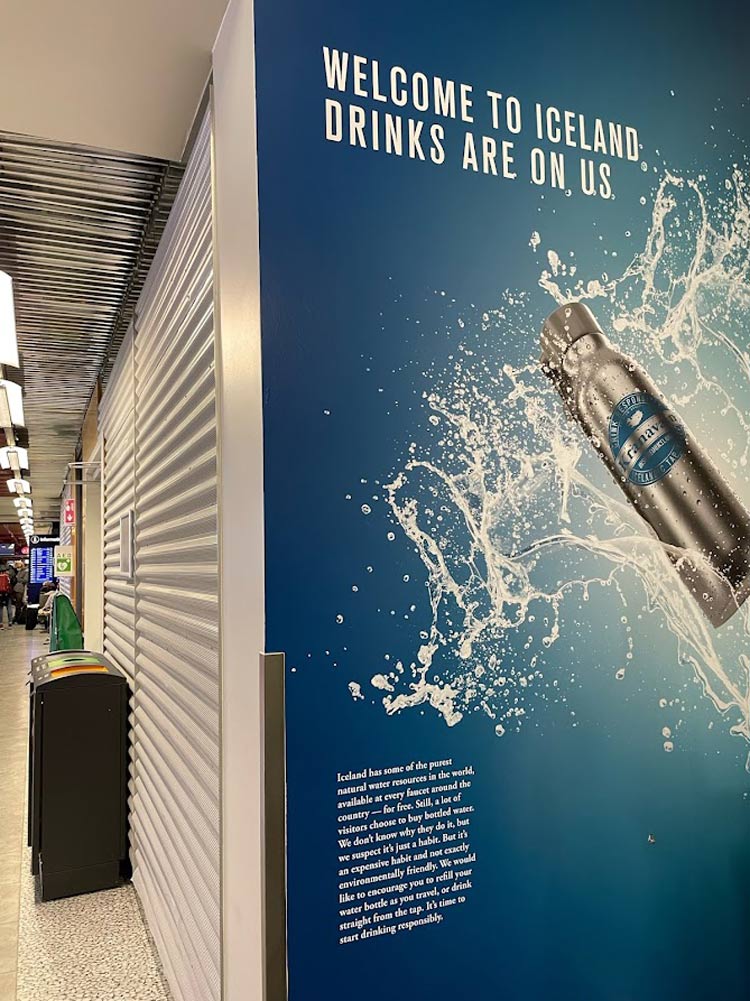
CAN YOU SEE THE NORTHERN LIGHTS IN ICELAND IN OCTOBER?
Although the natural phenomenon called Aurora Borealis (Northern Lights) is happening all the time, day and night, it needs two preconditions to be visible to the human eye: one, darkness, and two, clear skies. This is why the Northern Lights are only visible in Iceland from September to April. They can’t be seen in the summer, during which Iceland experiences 24-hour daylight.
However, October is generally considered to be the onset of prime Northern Lights season. This is because the nights are getting darker and the weather is still relatively mild, so you have a higher chance of clear skies.
Fun fact: We visited Iceland in October and caught the Northern Lights in action THRICE! You could argue that we got lucky but it’s also solid proof that you can definitely see the Northern Lights in Iceland in October.
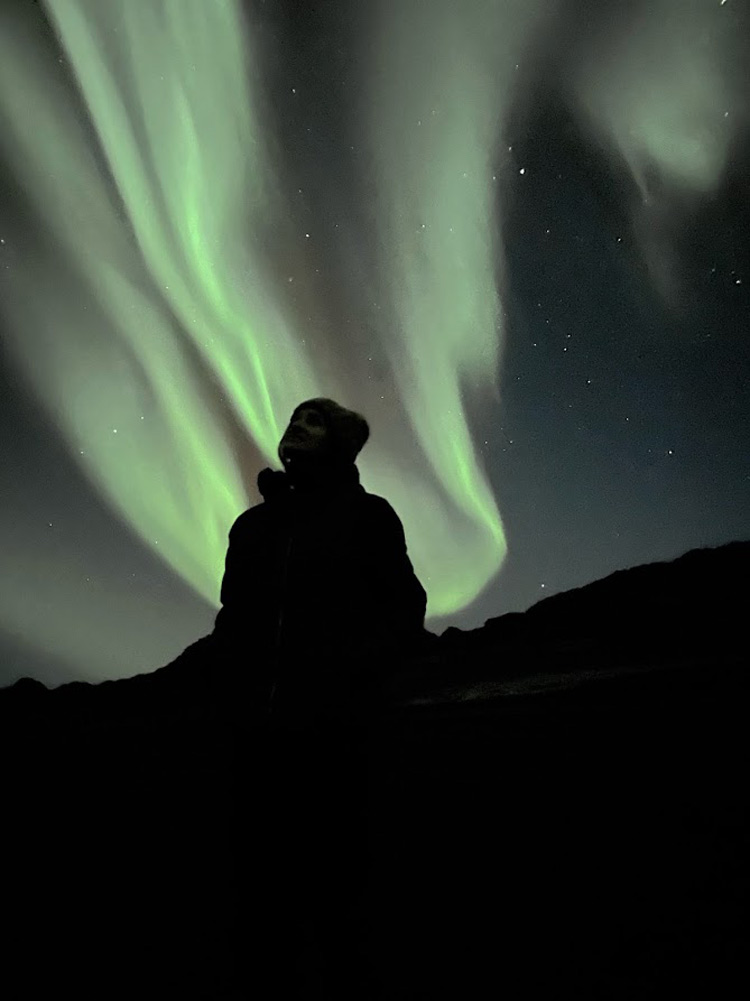
ICELAND IN OCTOBER WEATHER
The weather in Iceland in October changes every single day, even multiple times a day.
Since October is the official start of winter in Iceland, you’ll notice that the days get progressively shorter, and the temperature drops dramatically within the last 15 days in October.
Iceland October Weather Snapshot
- The average temperature in Reykjavik in October is about 8 degrees Celsius (46 degrees Fahrenheit). The temperature rangeS from a high of about 12 degrees Celsius (54 degrees Fahrenheit) to a low of about 2 degrees Celsius (36 degrees Fahrenheit).
- The average precipitation in Reykjavik in October is about 61 millimeters (2.4 inches). This is higher than the average rainfall in Iceland.
One thing worth noting is that October weather in Iceland is erratic. It can be really sunny and warm with temperatures in Reykjavik reaching up to 15 degrees Celsius (59 Fahrenheit) and then the next day it can be rainy, windy and cold.
The other parts of Iceland can be way colder, especially in the Highlands and the Westfjords. We witnessed temperatures of up to -6 degrees Celsius (21.2 degrees Fahrenheit), accompanied by strong gale winds, when we were in Myvatn in the north.
These winds are brutal and can knock you off your feet, so don’t even bother carrying an umbrella: if anything, it will sweep you away with the wind. Make sure to carry sufficient waterproof clothing if you visit Iceland in October.
While the month is not as cold as in winter, it’s not unheard of for there to be snowfall in Iceland in October. Though rare in Reykjavik and southern parts of the island at this time of the year, snow is fairly common in the Highlands and the northern parts of Iceland in October.
What’s scarier than snow is the ice that deposits on surfaces. It’s WAY worse in the winter but even in October, sidewalks and main roads may develop a thin layer of ice at sub-zero temperatures, which can be slippery and dangerous.
Daylight Hours in Iceland in October
The number of daylight hours in Iceland in October is about 10-12 per day on average. This decreases as you move further north in Iceland, and also gradually throughout the month.
On average, on 1st October the sun rises at about 7:30 am and sets at about 7 pm. By the last day of the month, the sun rises at about 9 am and sets at about 5 pm.
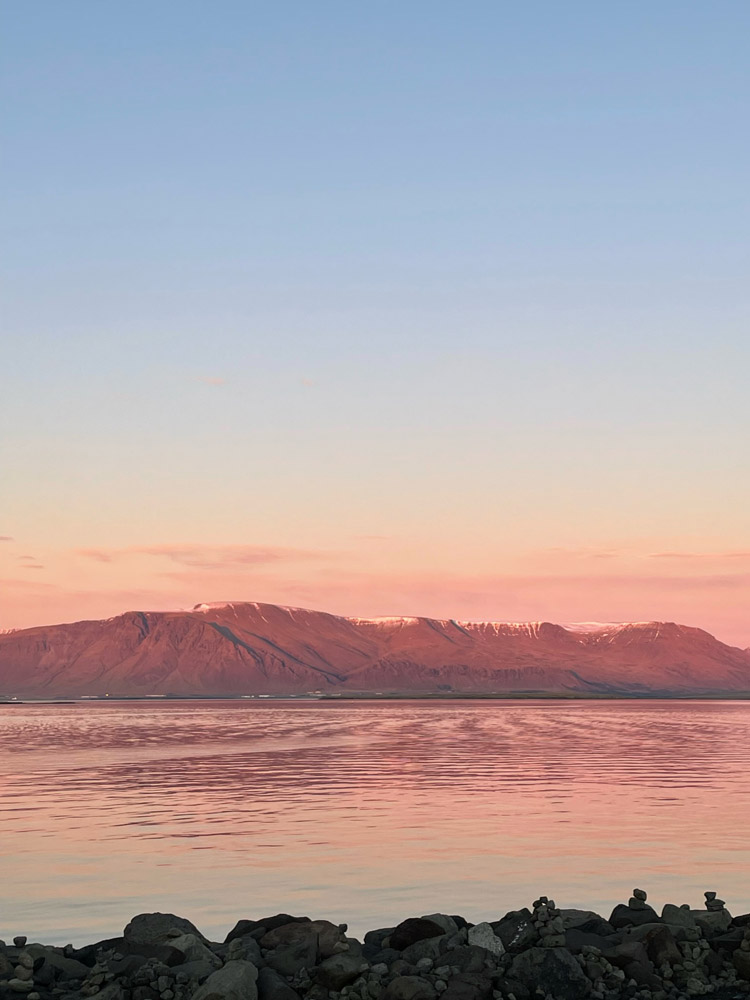
[You Might Like: 49 Landmarks in Europe Everyone Should Visit]
DRIVING IN ICELAND IN OCTOBER
You might be wondering: Can you drive around Iceland in October? The short answer is: yes, though it does involve some risk.
The roads in Iceland are well maintained but they can get slippery and icy in the colder weather.
As Icelanders like to say, there are only two seasons in Iceland: winter and road construction. So, while you can drive in Iceland in October, be prepared for some delays and possible road closures.
Now that we have that disclaimer out of the way, driving in Iceland in October is an experience in itself. Most of the roads are still open and you’ll be able to see some amazing landscapes that are only visible in the autumn season.
Iceland’s weather is so unpredictable that you can’t really rely on the forecast. That said, the official Icelandic weather forecast service (vedur.is) is an extremely useful resource to get the closest live estimate of the day’s weather. The website also tells you about road closures and detours, so make a habit of checking it out before you get on the road.
While most of the peripheral parts of the island are accessible in October, subject to weather conditions, the Highlands (interior parts of Iceland) close after the first snowfall (usually in October).
If a road says ‘Restricted Access’, follow the sign. Never drive on a road that is cordoned off. Volunteers in Iceland do a stellar job of flagging routes that are hazardous. It’s all done for your safety. Be a responsible tourist.
When driving in Iceland, there are often long stretches running into dozens of kilometers, with absolutely no human inhabitation. Carry plenty of supplies (I mean FOOD if you’re an incorrigible snacker like me), and make sure your car has enough fuel.
Good to know: In the event that something goes awry, or you get stuck and have no immediate help available, 112 is Iceland’s emergency telephone number.
Car Rental in Iceland
If you choose to rent a car in October, get a 4-wheeled drive, or a 4×4.
While a smaller car would do just fine in the summer, the icy roads, unannounced rains, ungraded gravel tracks, and fewer daylight hours need you to go for a much sturdier vehicle in October.
The Ring Road, the most popular travel route in Iceland, is regularly cleared of snow and is fairly safe to drive even in a normal car (though I highly recommend getting a 4WD for your own safety).
Especially if you plan to visit the other parts of the island, make sure to rent a 4×4. These areas include the famous (or infamous) F-roads which can take a huge toll on smaller cars.
Good to know: Many small-time rental car companies operate in Iceland. Even though they advertise the pickup point as being at the Keflavik airport, they are usually based in a smaller town nearby. Once you arrive at the airport, they escort you in a shuttle to the pickup point which could be 20-30 minutes away.
WHAT TO PACK FOR ICELAND IN OCTOBER
In addition to being unpredictable, October is the wettest month in Iceland. So if you’re wondering what to wear in Iceland in October, begin with packing enough water-proof clothing.
The best way to deal with Iceland’s changing weather is to layer up. You can take off or add layers as needed, depending on the temperature.
- A base layer of merino wool is ideal as it wicks away moisture and keeps you warm even when wet.
- I also recommend carrying mid-layers of fleece or wool, a scarf, and waterproof gloves.
- Additionally, make sure to pack a pair of waterproof boots and warm socks.
As mentioned earlier, it is pointless to carry an umbrella as the winds are very strong. Instead, pack a warm, waterproof jacket and a pair of waterproof pants. Make sure your jacket has a good hoodie and gives you ample cover.
I know Iceland is cold(-ish) pretty much the whole year, but don’t forget to carry sunglasses as it can often get blindingly sunny – especially in October which sees so much weather volatility.
And lastly, pack a swimsuit – this is an easy one to forget but you don’t want to miss out on a chance to soak in Iceland’s geothermal pools and hot springs!
WHAT TO DO IN ICELAND IN OCTOBER
October is such a great time to visit Iceland as you can get the best of both summer and winter activities. From catching the Northern Lights to watching whales up close, here are the best things to do in Iceland in October.
See the Northern Lights in Iceland in October
As mentioned before, Iceland in October is an ideal time to see the Northern Lights, as the nights are nice and long.
There are many ways to see the Northern Lights in Iceland. You can go on a guided tour or drive around Iceland yourself in search of them.
In order to meet the two Northern Lights prerequisites – pitch dark and clear skies – it is best to go outside of Reykjavik. Generally, city lights add to the ‘light pollution’ which interferes with the visibility of the Northern Lights. So while on some days you could just as well catch the lights in downtown Reykjavik, heading to the city outskirts and beyond can really amp up your chances of witnessing this staggeringly beautiful natural phenomenon.
There are many day tours that leave from the capital Reykjavik and take you to the best places to see the Northern Lights in Iceland. These include Thingvellir National Park, Geysir Hot Spring Area, and Vatnajökull National Park. If you’re in the north, tours also depart from Akureyri.
The best time to view the Northern Lights in October is between 10 pm and 2 am.
Protip: The Aurora feature on the Vedur app gives you a daily Northern Lights forecast. In the areas marked in the green zone, there is a higher likelihood of seeing the lights, so you should head up there. Also look at the ‘Aurora forecast’ rating on the right – the higher it is, the better your chances. Generally, the rating should be at least higher than 3 for a decent chance to see the Aurora Borealis.
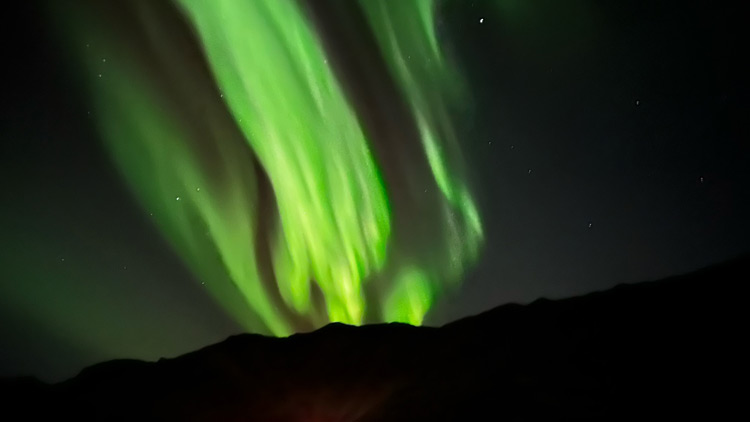
Chase Waterfalls in Iceland in October
Iceland is home to some of the most beautiful waterfalls in the world.
And while you can find waterfalls all across Iceland, the South Coast has the densest concentration of them. So if you’re short on time, this is the best place to go.
Iceland’s waterfalls are at their best in the fall when the rains are at their heaviest. This is also when you’ll find the greatest variety of colors as Iceland’s landscape turns a beautiful shade of yellow, red, and orange.
Some of Iceland’s most popular waterfalls include Seljalandsfoss, Skógafoss, and Gullfoss. All of these waterfalls are located on the South Coast and can easily be visited on a day trip from Reykjavik. In the North, you’ll find waterfalls like Goðafoss and Dettifoss which are just as spectacular.
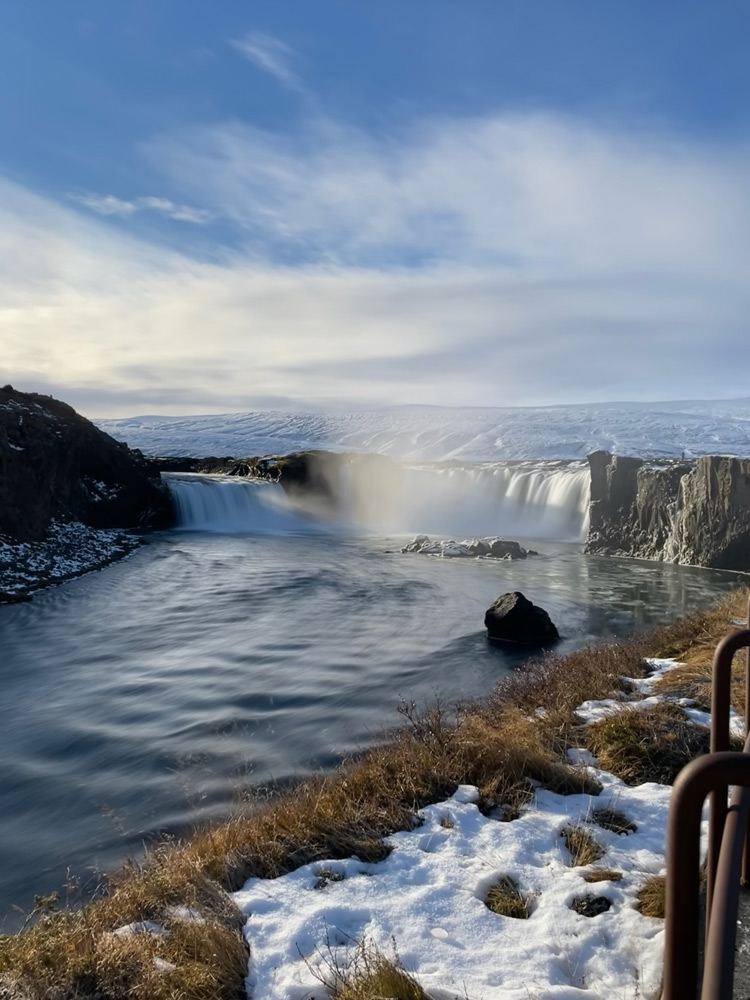
Experience 4 Seasons in a Day
Iceland’s weather is notoriously unstable and in October, you can expect all four seasons in a single day.
One minute it can be sunny and the next, hailing or snowing. Besides, it’s windy pretty much all the time. This is all due to Iceland’s location between the cold Arctic and the warm Atlantic air masses.
This makes Iceland’s weather very unpredictable but also quite exciting. After all, where else can you experience such extreme changes in such a short span of time?
Witnessing the whims and vicissitudes of the island’s weather is one of the best things to do in October in Iceland.
[You Might Like: 100 Adventure Ideas You Can Try TODAY!]
Hot Springs in Iceland in October
A must-do in Iceland is to visit one of its many geothermal pools and hot springs. These are the perfect places to relax and warm up after a day of exploring Iceland’s cool and windy weather.
Iceland has a long tradition of soaking in hot springs. In fact, Icelanders have been doing it for centuries. Soaking in hot springs and pools is something the locals indulge in, throughout the year regardless of the weather (October included!).
There are many natural hot springs in Iceland but the most famous one is the Blue Lagoon. Located just outside of Reykjavik, the Blue Lagoon is one of Iceland’s most popular tourist attractions.
If you’re looking for a more authentic experience, there are also many smaller and lesser-known hot springs around Iceland. These are often located in remote areas and are less crowded.
We went to the Mývatn Nature Baths, often touted as the Blue Lagoon of the North. It is cheaper and way less crowded than its southern cousin. Highly recommended, especially if you’re going to be visiting North Iceland.
Do a Glacier Tour in Iceland in October
Of the myriad once-in-a-lifetime things you can do in Iceland, walking on a glacier definitely ranks at the top.
Iceland is covered in glaciers and taking a glacier tour is one of the best ways to experience them. These tours depart from Reykjavik and take you to the South Iceland glaciers, where most of Iceland’s glaciers are located. The most popular among these are Langjokull and Vatnajökull, the largest glacier in Iceland.
Hiking a glacier is a truly phenomenal experience. While most tours are unavailable in the winter, October is the last month of business for them. This means your glacier-hiking dreams can come true if you visit Iceland in October. 😉
Additionally, you can also book ice cave tours and snowmobile rides in the glaciers.
Protip: We booked a glacier hike from TrollExpeditions. The tour starts at Skaftafell in Vatnajokull National Park, and includes gear like crampons and ice axes. Walking through snowfields gleaming on distant slopes is a surreal experience and I absolutely recommend this tour!
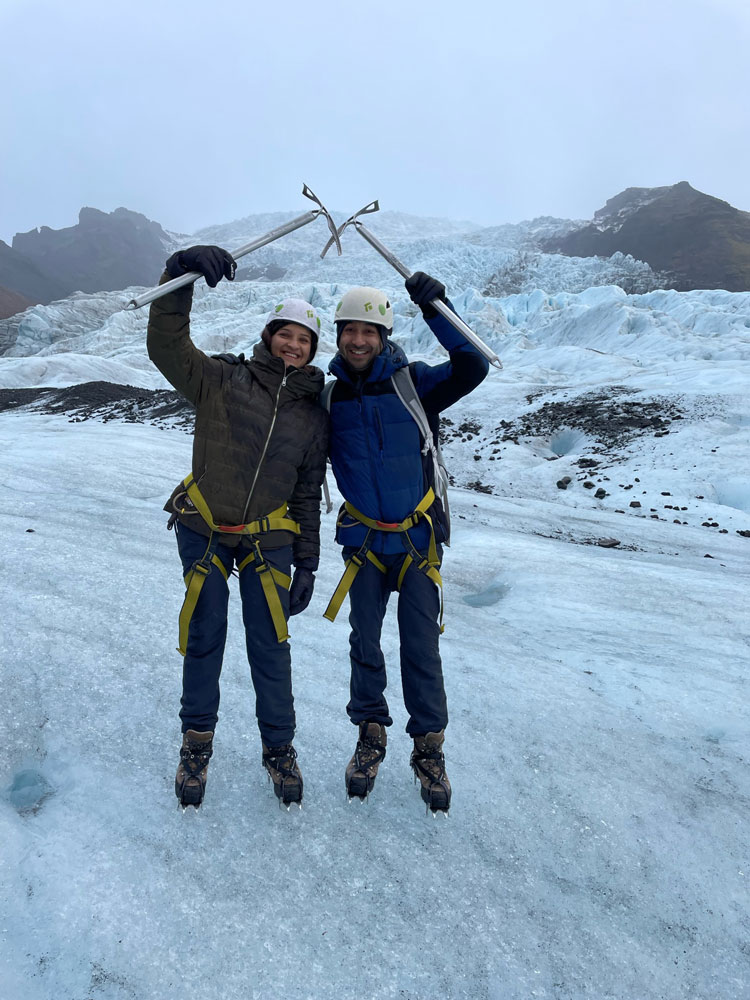
Whale Watching in Iceland in October
October follows the summer season, so the animals and birds are in a migratory swing. That said, with some luck you could just as well spot whales in Iceland in October – at least in the first half of the month.
The Icelandic waters are home to many different species of whales including humpbacks, minkes, orcas, and the ever-elusive blue whale. You can also catch glimpses of dolphins and porpoises.
The best place to go whale watching is Husavik in North Iceland. An hour away from Akureyri, this quaint little town is proclaimed the whale-watching capital of Iceland for a reason.
If you’re based in Reykjavik and don’t have the time to travel up North, you can also go whale watching from the capital. Tours operate from the Old Harbour and travel across the Faxaflói Bay, a great destination for whale sightings.
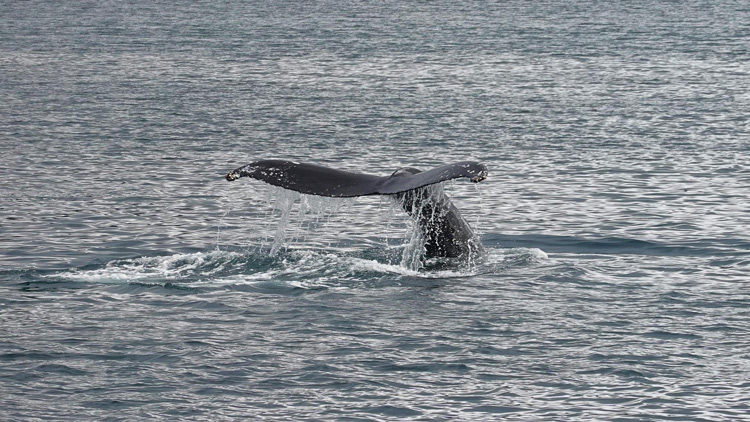
See Icebergs in Jokusarlon
Jokusarlon is the deepest lake in Iceland and is located on the edge of Vatnajökull, Iceland’s largest glacier. The lake is filled with icebergs that have broken off from the larger glacier tongue, making for a surreal and beautiful panorama.
Jokusarlon is one of Iceland’s most popular tourist attractions and is definitely worth a visit, even more so in October. At this time of the year, the water ripples in the lagoon capture and reflect the autumn light and colors in a splendid way. You can see the icebergs traipsing across the lagoon. It feels like time has come to a standstill.
Protip: Jokusarlon is also a brilliant location to spot seals in October. Take a tour to the center of the lagoon, where you are much more likely to catch many seals hanging loose in their natural habitat. Besides, you’ll be surrounded by icebergs and the frame-worthy Arctic scenery. It sure is an inexplicable feeling.

Explore Iceland’s Westfjords in October
While the Westfjords may not be accessible in the winter, you can definitely score a chance to visit this underrated little Icelandic haven in the early days of October – weather permitting.
The Westfjords scribe a peninsula in Iceland’s northwest that’s characterized by its dramatic topography and fjords. This region is one of Iceland’s most picturesque and unspoiled areas.
Some of Iceland’s best hiking trails are located in the Westfjords. Furthermore, Dynjandi Waterfall – located in the area – is one of the most impressive waterfalls in Iceland.
What makes the Westfjords especially worth visiting, though, is the enormous variety of birdlife. Iceland’s largest concentration of white-tailed eagles can be found here, along with puffins, gyrfalcons, and many other species of birds.
The Hornstrandir Nature Reserve is a must-visit in the Westfjords. This is Iceland’s only truly wild Nature Reserve and it’s teeming with wildlife. Another great spot is Látrabjarg, Iceland’s westernmost point. Here you’ll find the largest bird cliff in Europe and a thriving population of the Arctic puffin.
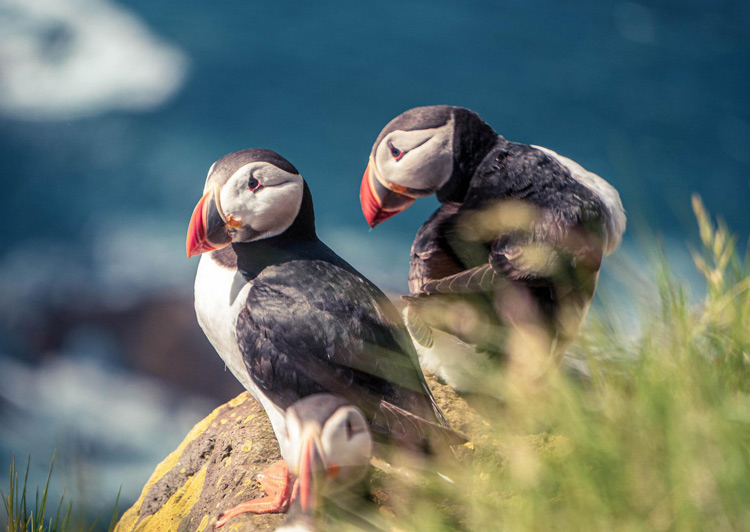
Visit Reykjavik in October
Being the capital of Iceland, Reykjavik is bustling and most attractions are open throughout the year, also in October. Over 60% of Iceland’s population lives in the Greater Reykjavik area.
Reykjavik is a great base for day trips. From the capital, you can easily visit Iceland’s most famous sights. But the city itself is a cultural hub with tons to do. One day in Reykjavik is enough to cover most of the top attractions.
Fun Fact: Reykjavik is the northern-most capital city in the world!
One of Reykjavik’s biggest attractions is the Hallgrimskirkja, Iceland’s largest church. The tower offers a great view of the city and its surroundings.
Another must-see is the Perlan, a former water tank that’s been turned into a museum with simulated experiences like Northern Lights watching, indoor ice caves, and bird cliffs.
Harpa Concert Hall and Conference Centre is another great Reykjavik sight. The building is covered in over a thousand Iceland-made glass panels, making it one of Iceland’s most iconic buildings.
Also make a stop at the Sun Voyager, a steel sculpture in the shape of a Viking ship that’s located on the waterfront.
Besides, you can go shopping in Laugavegur, visit some of Reykjavik’s many great bars and restaurants, or experience the vibrant nightlife.
Good to know: Another must-visit in Reykjavik (you’re UNLIKELY to miss it as it’s smack dab in the middle of the city center) is the Rainbow Street. Iceland is a very open and tolerant country, and the Rainbow Street is a reflection of that. The rainbow has been an annual feature, but in 2019 it was made permanent. And the local residents came together to paint the street!
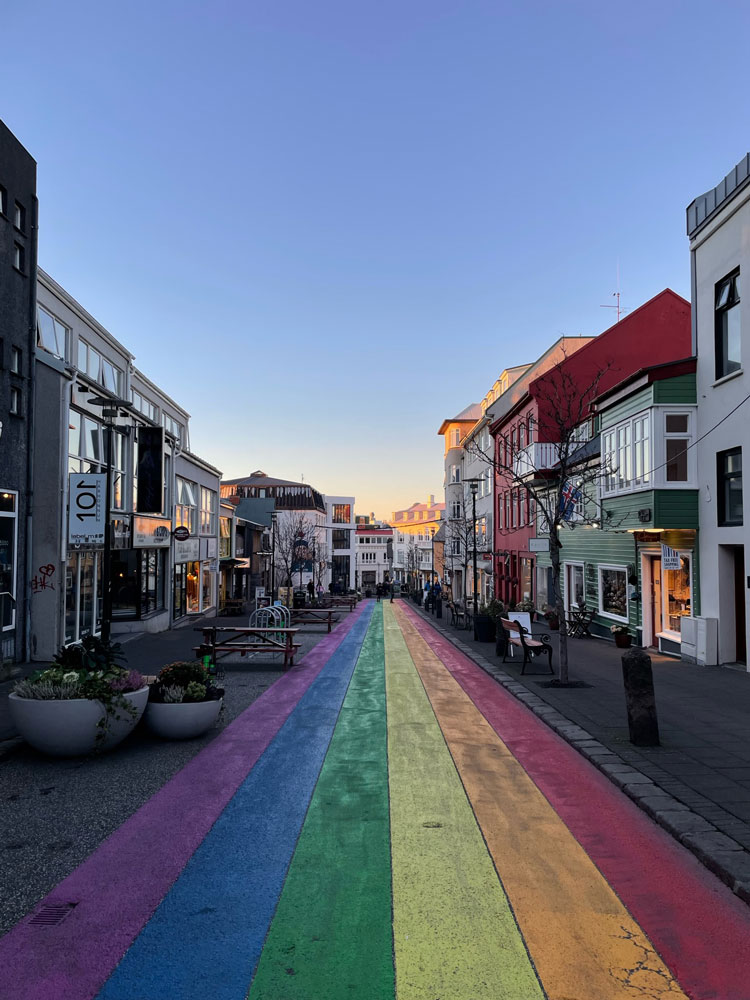
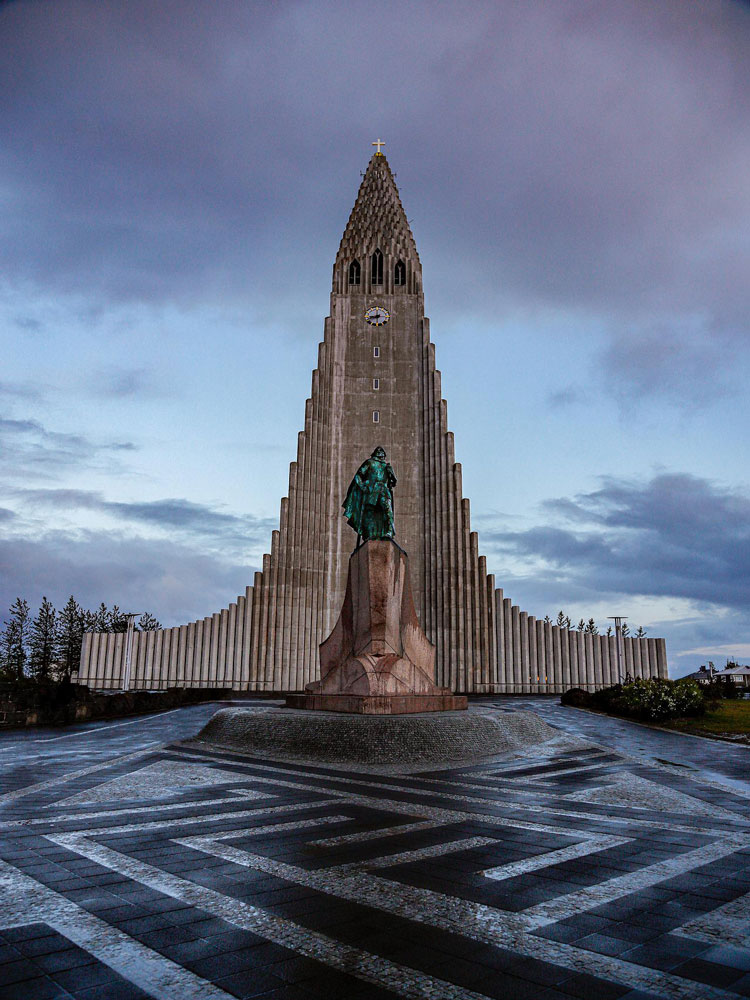
GOLDEN CIRCLE IN OCTOBER
The Golden Circle is one of Iceland’s most popular tourist routes and for good reason.
This 300 km-long circuit takes you to some of Iceland’s most iconic sights, including Thingvellir National Park, Gullfoss Waterfall, and the geothermal area around Iceland’s second-largest city, Geysir.
Thingvellir National Park is a historical and geological site of great importance. It’s located in a rift valley between the Eurasian and North American tectonic plates. It’s also where Iceland’s first parliament, the Althing, was founded in 930 AD.
Gullfoss Waterfall is one of Iceland’s prettiest waterfalls, and the Geysir geothermal area is home to Iceland’s original geyser, from which all other geysers are named.
All the locations along the route remain open during October. You can get a slice of pretty much everything Iceland has to offer.
The Golden Circle can easily be driven through, if you rent a car. There are also many tours (mostly starting in Reykjavik) that cover all the Golden Circle attractions in a day.
DIAMOND CIRCLE IN OCTOBER
Iceland’s northernmost points are located along the so-called Diamond Circle. This is a less popular tourist route than the Golden Circle, but it’s just as beautiful – in fact I’ll wager that it’s even more.
The Diamond Circle takes you to the Lake Myvatn area, Iceland’s most volcanically active region. The area is home to the Dettifoss Waterfall, Europe’s most powerful waterfall, as well as the geothermal area of Namaskard. This area features steaming vents, mud pots, and bubbling pools.
Another stop on the Diamond Circle is Hvitserkur, a 15-meter-high basalt sea stack that’s shaped like a dragon. Although to me it kinda looks like an elephant. What do you think? 🙂
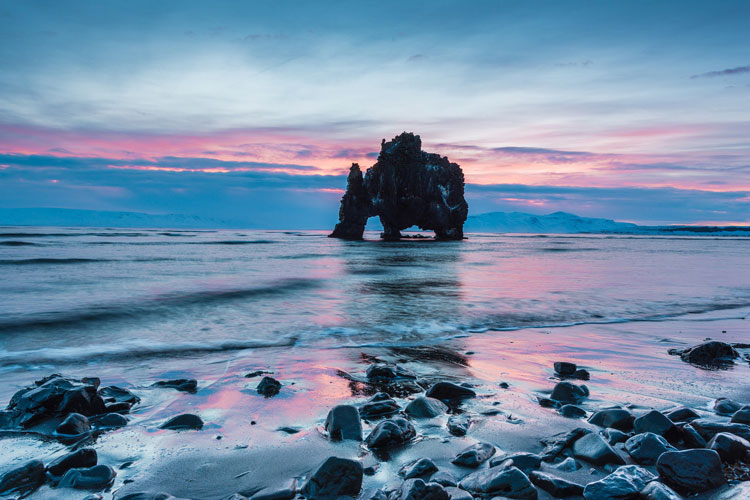
Also in the area is the Godafoss Waterfall, often referred to as Iceland’s “Waterfall of the Gods.”
In October, the Diamond Circle is just as accessible as the Golden Circle. You can either drive it on your own or join one of the tours, most of which start in Akureyri.
MORE PLACES TO VISIT IN ICELAND IN OCTOBER
Snaefellness Peninsula
Of all the places to visit in Iceland, the Snaefellness peninsula is my favorite. This beautiful area is located in Iceland’s west, not far from Reykjavik.
There are so many great things to do in Snaefellness. You can explore the Snaefellness National Park with its mountains and lava fields and glaciers. You can visit the Djúpalón Beach with its dramatic black sand and elfin lava formations. The Snæfellsjökull, Iceland’s smallest glacier and ice-capped volcano, has been the cornerstone of Jules Verne’s classic, “Journey to the Centre of the Earth”. It attracts millions of people from all over the world.
[You Might Like: 21 Funniest Travel Books Ever Written]
Due to the vast array of things to see and do, the Snaefellness Peninsula is famously called “Iceland in Miniature”. Think of it as a microcosm of the island.
Snaefellness is accessible in October and you can self-drive around the peninsula or take a day tour from Reykjavik.
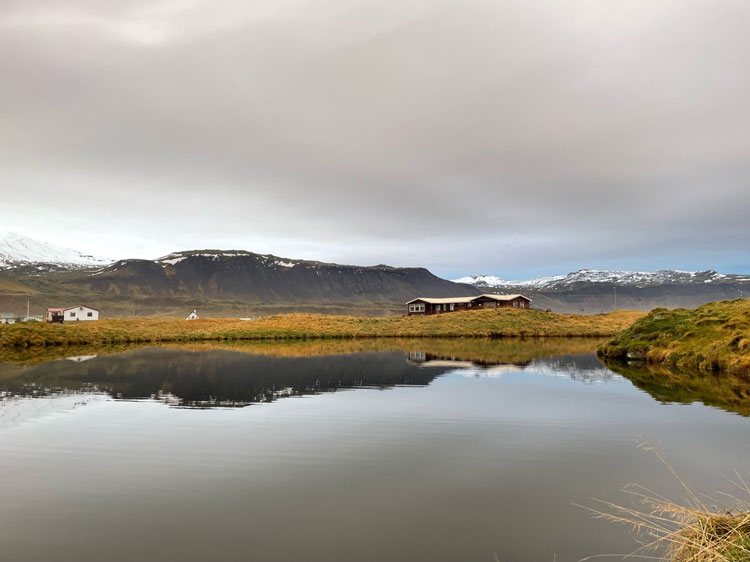
Vatnsnes Peninsula
A peninsula located in Iceland’s northwest, Vatnsnes is accessible in October and features some of Iceland’s most beautiful and unique sights.
Vatnsnes is known for its unique basalt rock formation, Hvitserkur, which is part of the Diamond Circle. The area is also the biggest seal colony in Iceland, and an excellent spot for seal viewing.
Dimmuborgir
Also called the Black Fortress, Dimmuborgir is a lava field located in Myvatn in the North.
Dimmuborgir is famous for its large, dramatic rock formations and caves. It’s said that the 13 Icelandic trolls, or Yule Lads, live in these caves. These mischievous characters are Iceland’s version of Santa Claus.
The folklore legend is that these trolls rest up through the summer and come alive in the winter, and you can actually see them if you walk through the caves and shout “Jolasveinn!”
Dimmuborgir is a great place to visit in Iceland in October, as you cover the larger Myvatn area.
Fagradalsfjall Volcano
The Fagradalsfjall Volcano offers incredible views of Iceland’s landscape, and makes a great hiking destination in October. There are several trails to choose from, however it makes for a 3-4 hour hike. So a general level of fitness if needed.
The volcano last erupted in March 2021 and left a crater behind, which you can visit. All the volcanic activity has also led to the lava spilling over and flowing out all the time, forming deep ashen crevasses in its wake.
The sight of fresh lava stream formations flowing from the volcano, and little tufts of smoke emanating from its mouth – a volcano tour in Iceland is one of the most unforgettable experiences ever.
Fagradalsfjall is only an hour’s drive from Reykjavik. You can park at the Geldingardalur Volcano Parking.
P.S.: Right at the start of the hike is a food van that sells mind-blowing fries… don’t miss them!
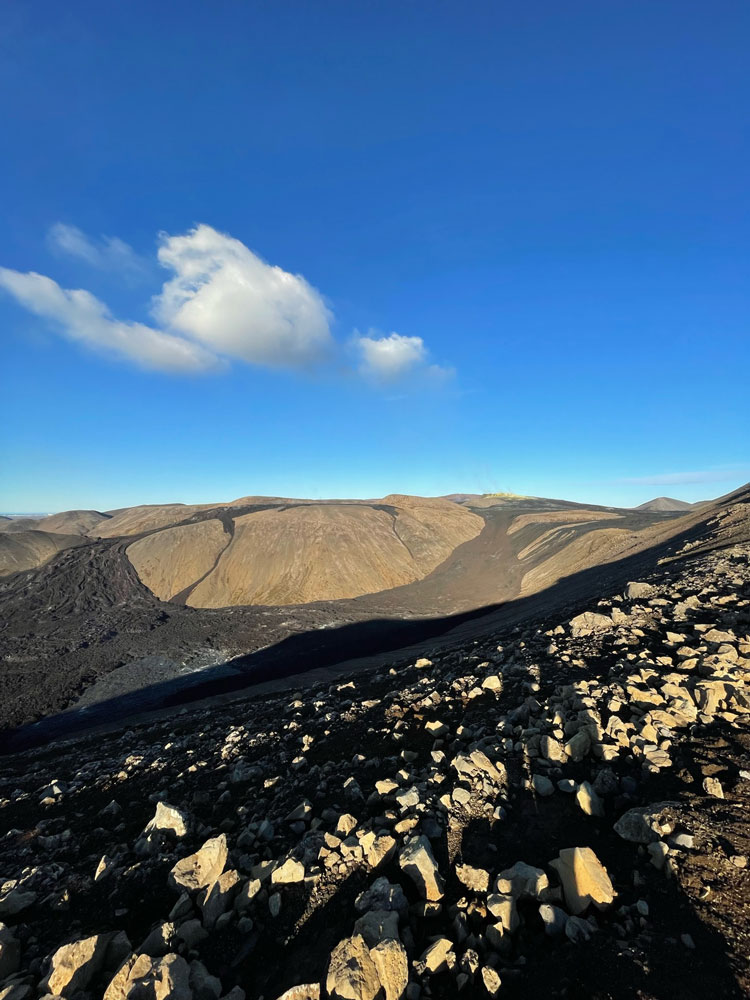
EVENTS AND FESTIVALS IN ICELAND IN OCTOBER
For an island as rich in natural diversity as Iceland, you would expect nothing less from its cultural and musical scene. While some of the major events take place during the summer months under the midnight sun, October in particular is a great time to visit Reykjavik as there are some really cool festivals you can be part of.
Halloween in Iceland
While still a recent addition to Iceland, Halloween is celebrated with gusto. Icelanders love to dress up and party, and Halloween is the perfect excuse to do just that.
On the evening of October 31, the streets of Reykjavik are filled with people in costume, and the clubs and bars are packed. The kids go trick-or-treating around the city, and there are Halloween parties for all ages.
If you’re looking for a fun night out, and happen to be in Iceland in October, head to the closest bar and join the locals in partying like it’s 1999.
Reykjavik International Film Festival (RIFF)
RIFF is Iceland’s biggest film festival, and takes place every year between late September and mid-October. The festival showcases the best of Icelandic and international cinema, with a focus on new and emerging talent.
There are screenings of both feature-length and short films, as well as Q&A sessions with directors, writers and actors. RIFF is a great opportunity to get a taste of Iceland’s vibrant film scene.
Iceland Airwaves Music Festival
Reykjavik in October, closer to the month’s end, comes alive with excitement in anticipation of Iceland Airwaves – Iceland’s biggest music festival.
Iceland Airwaves takes place in the beginning of November, but many concerts and events are held in the days leading up to the festival. So if you’re in Iceland at the end of October, make sure to check out some of the concerts.
Iceland Airwaves offers a chance to see both up-and-coming and established Icelandic musicians, as well as international acts. The festival takes over the city, with concerts and events happening in clubs, bars, cafes and even in people’s houses 😉
Imagine Peace Tower
If you’re looking for a place to reflect and find some peace and quiet, the Imagine Peace Tower is the perfect spot. The tower was built in 2007 by Yoko Ono, in memory of her late husband John Lennon.
‘Imagine Peace’ is written in 24 languages on the tower, which is symbolic of the couple’s message of harmony and solidarity.
The tower is lit up with a powerful beam of light every year on John Lennon’s birthday (October 9) and stays alight until the anniversary of his death (December 8).
Located on Viðey Island, the Imagine Peace Tower is only a short boat ride from Reykjavik.
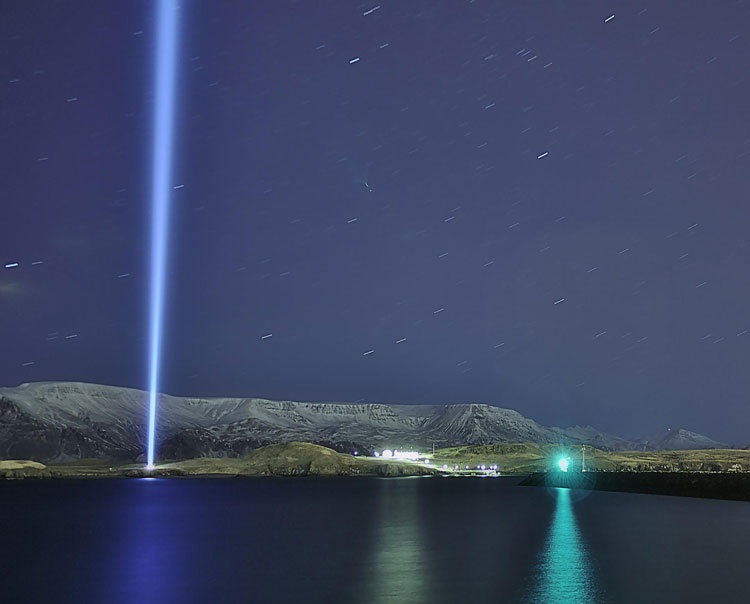
ICELAND IN OCTOBER IS INCREDIBLE!
As you can see, Iceland has a wealth of experiences to offer in October. The weather Gods are (relatively) kinder, there is still enough daylight, and you can pack in so much during the month.
If you’re looking for a breathtaking, off-the-beaten-path fall destination to travel to this October, look no further than Iceland. With its unreal landscapes and abundance of things to do, Iceland has something for everyone.
Just make sure to pack your layers! 🙂




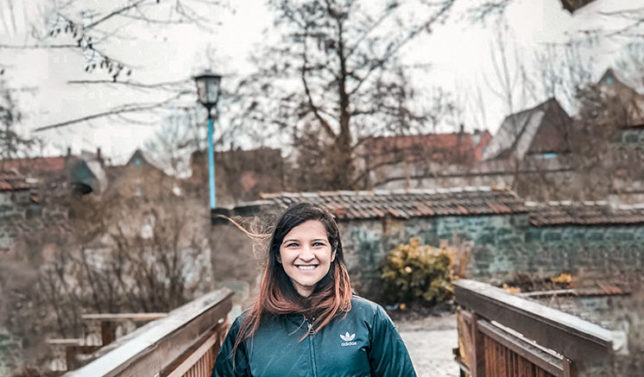
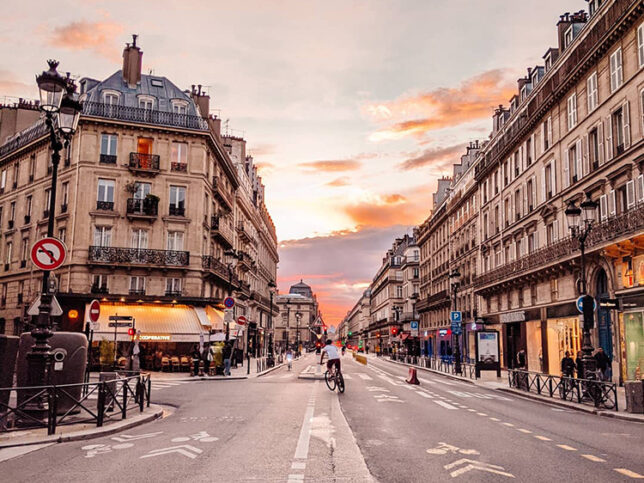
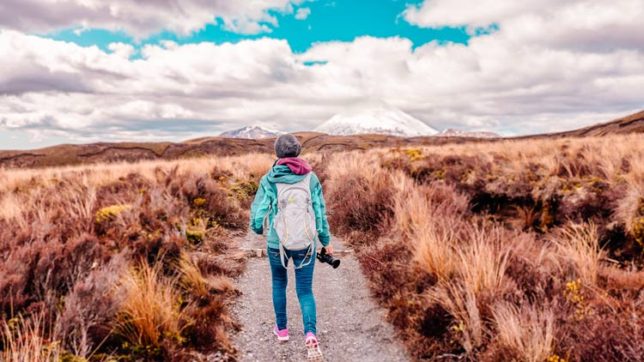


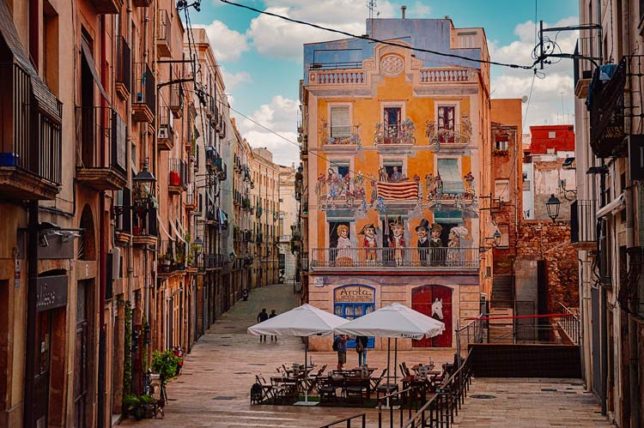
1 Comment. Leave new
Wow, very well written. I’m so inspired and getting ready to pack my bags!